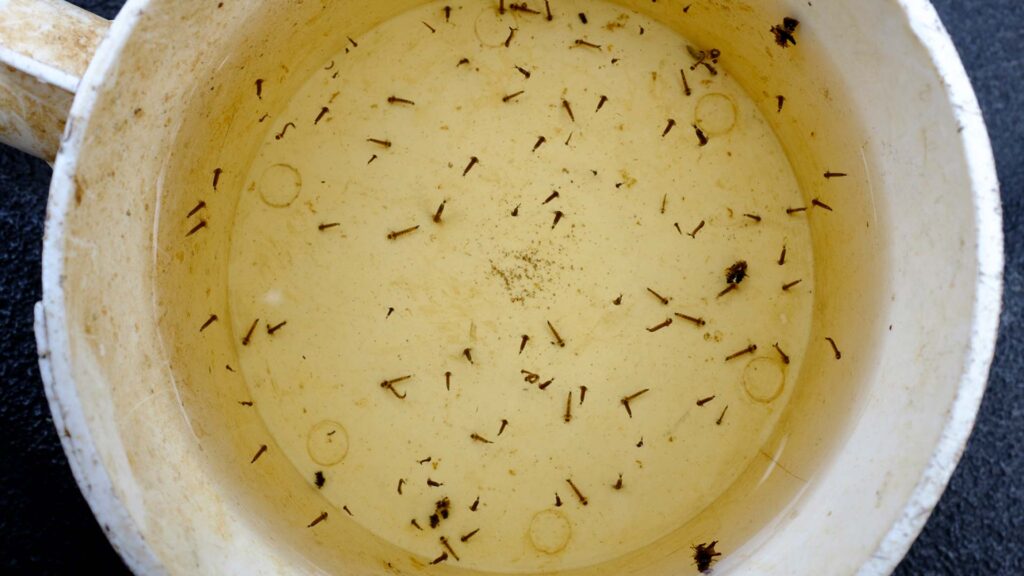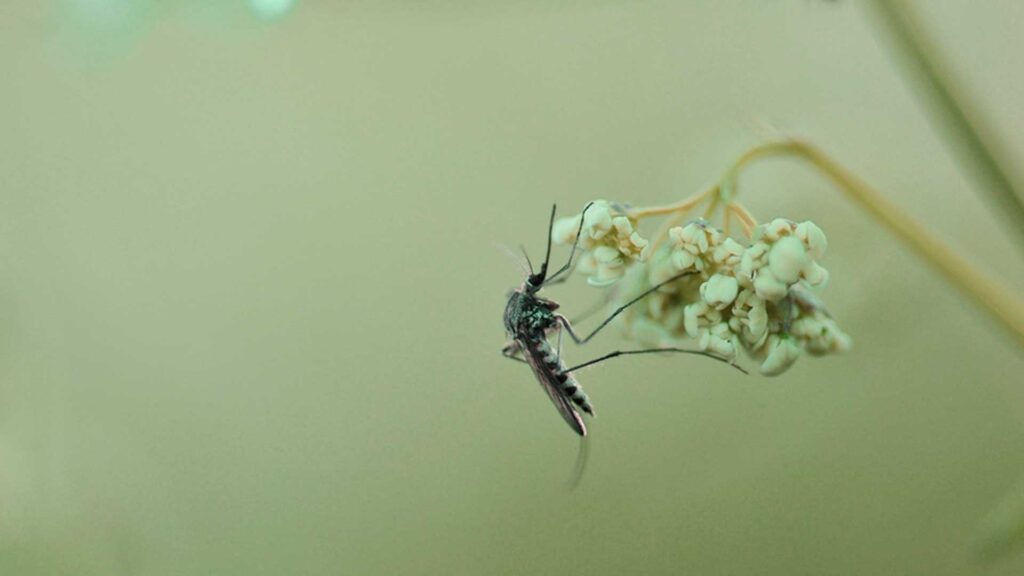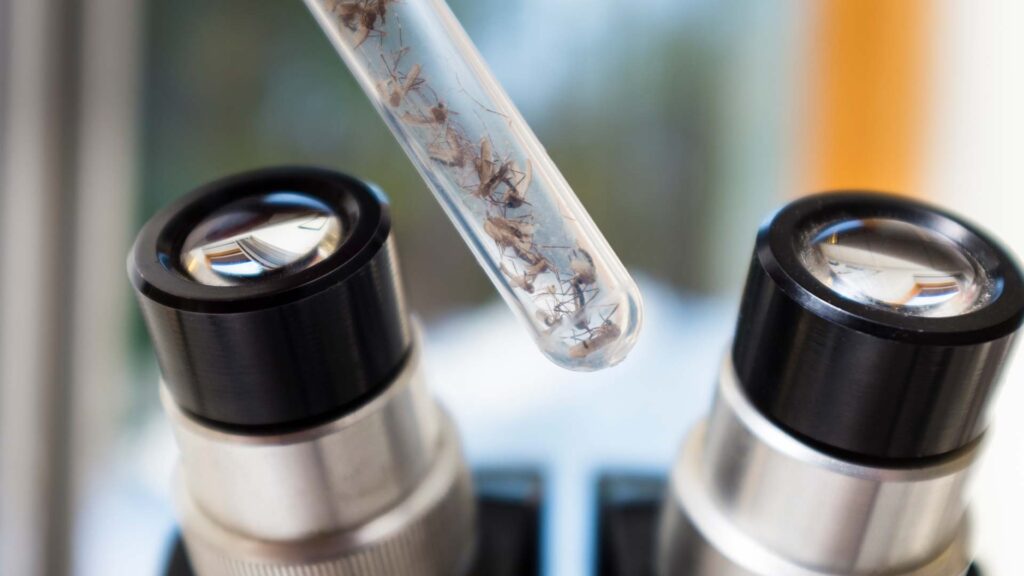How long do mosquitoes live?
Mosquitoes have a relatively short lifespan, with most species living for about two to three weeks. However, this can vary depending on environmental conditions and the availability of food sources. Female mosquitoes, which are responsible for biting humans, typically live longer than males, surviving up to a month in ideal conditions. Males usually live less than a week, focusing mainly on mating. Understanding the lifespan of mosquitoes is crucial for effective home and community mosquito control efforts.

- The Brief Yet Impactful Life of a Mosquito
- Breeding Grounds: A Key to Mosquito Longevity
- Life Cycle in Water: The Crucial Stage in Mosquito Development
- Climate Change and Mosquito Lifespan: A Growing Concern
- Health Risks: More Than Just Bites
- Navigating the Challenge of Mosquito Control
- Frequently Asked Questions About The Life Span of Mosquitoes
In the intricate ecosystem of our backyards and neighborhoods, few creatures command as much attention for their size as the mosquito. These tiny, buzzing insects, often dismissed as mere annoyances, hold a more significant place in the public consciousness due to their impact on home safety and human health. While their notorious bites are a universal source of irritation, it is their role as vectors for various diseases that elevates them from being mere pests to a subject of health concern.
Mosquitoes, in their ubiquity, have become a symbol of warm summer evenings, but also of the risks lurking in our own gardens. Their presence is often taken for granted, yet there is a complex life cycle and ecological significance behind each whine and bite. Understanding the lifespan of these insects is not just a matter of curiosity; it forms the foundation of effective mosquito management and disease prevention strategies.
The life of a mosquito is a marvel of nature’s efficiency. From their aquatic beginnings as eggs laid in stagnant water to their airborne adult stage, mosquitoes demonstrate a life cycle that is both rapid and, in many ways, resilient. This resilience, however, poses significant challenges in controlling their populations and the diseases they carry.
In exploring the lifespan of mosquitoes, we delve into a narrative that intertwines biology, environmental science, and public health. It’s a story that reveals how the smallest creatures can have disproportionate effects on human life and how our efforts to manage these effects must be both informed and persistent.
As we embark on this exploration, we consider not just the biological facts, but also the broader implications of mosquitoes in our world. Their lifespan, influenced by factors ranging from local weather patterns to global climate change, shapes our strategies for coexisting with these unwelcome neighbors. In understanding the life of a mosquito, we gain insights into the larger environmental and health challenges facing our communities, making this seemingly simple question a gateway to a deeper understanding of the world around us.
The Brief Yet Impactful Life of a Mosquito
Mosquitoes, often dismissed as mere backyard nuisances, lead lives that are both intriguing and consequential. Despite their fleeting existence, their impact on ecosystems, human health, and comfort is profound.
The life of a mosquito is a journey through four distinct stages: egg, larva, pupa, and adult. This cycle begins when a female mosquito lays her eggs on the surface of stagnant water. Within 48 hours, these eggs hatch into larvae, which are aquatic and must come to the surface to breathe.
Larvae feed on organic matter in the water, growing rapidly and molting several times. Within a week, they transform into pupae, a stage marked by a non-feeding period of development. The adult mosquito emerges from the pupal case after two to three days, ready to begin its airborne life.
Once an adult, the primary goal of a mosquito is reproduction. Male mosquitoes, contrary to popular belief, do not bite humans. They feed on nectar and are primarily concerned with mating. Males typically live for about a week, their shorter lifespan attributed to their delicate build and the energy-intensive task of finding a mate.
Female mosquitoes, on the other hand, require a blood meal to develop their eggs. This quest for blood is what brings them into frequent, and often irritating, contact with humans. After feeding, a female mosquito can lay anywhere from 100 to 300 eggs, ensuring the continuation of the species.
The lifespan of mosquitoes is heavily influenced by environmental conditions. Temperature and humidity play crucial roles. In warmer climates, mosquitoes can complete their life cycle in as little as seven days, leading to higher population densities. Conversely, cooler temperatures can significantly slow down their development and reduce their lifespan.
Mosquitoes face numerous threats throughout their life. In their aquatic stages, they are preyed upon by fish, frogs, and other aquatic insects. As adults, they fall victim to birds, bats, and spiders. Additionally, mosquitoes are susceptible to various pathogens, including bacteria and viruses, which can further reduce their lifespan.
Despite their short lives, mosquitoes have a long-standing and significant impact on human societies. They are notorious for spreading diseases like malaria, dengue, and West Nile virus. The World Health Organization estimates that mosquito-borne diseases are responsible for millions of deaths annually, making mosquitoes one of the deadliest animals on the planet.
The life of a mosquito is a testament to nature’s complexity and efficiency. In their brief existence, mosquitoes play a vital role in ecosystems as pollinators and as a food source for other animals. However, their capacity to spread disease makes understanding and managing their populations a critical aspect of public health. As we continue to study these creatures, we gain valuable insights into the delicate balance of our ecosystem and the ongoing challenge of disease prevention.
Breeding Grounds: A Key to Mosquito Longevity
One of the most critical aspects in understanding and controlling the mosquito population is their breeding behavior. Mosquitoes require stagnant water to lay their eggs, turning any standing water in and around our homes into potential breeding grounds. This dependency on water for reproduction is a pivotal factor in their life cycle and, consequently, their longevity.
The Role of Stagnant Water
Mosquitoes lay their eggs in stagnant or slow-moving water. This can include natural sources like ponds and marshes, as well as man-made containers such as bird baths, old tires, and even small puddles of water in a garden. The female mosquito lays her eggs on the surface of the water, where they remain until hatching. In ideal conditions, these eggs can hatch within 48 hours.
The breeding grounds of mosquitoes are a crucial factor in their population control. By understanding the importance of stagnant water in their life cycle, homeowners can take effective steps to disrupt the breeding process. These efforts, combined with community initiatives, can significantly reduce the presence of mosquitoes, thereby enhancing both home safety and public health.
Homeowners can play a crucial role in disrupting this cycle. Regularly emptying containers that collect rainwater, maintaining clean gutters, and ensuring proper drainage can significantly reduce mosquito populations.
Mosquito Breeding Habits
Lifecycle Stages: Mosquitoes undergo four life stages: egg, larva, pupa, and adult. The first three stages occur in water.
Egg Laying: Female mosquitoes lay eggs in stagnant or slow-moving water. Some species lay eggs that can survive dry conditions and hatch once submerged in water.
Ideal Conditions: Common breeding sites include ponds, marshes, and any containers with standing water, such as buckets, birdbaths, and clogged gutters.
Prevention Tips: Regularly empty and clean containers that hold water. Use larvicides in ponds and ensure proper water circulation.
Life Cycle in Water: The Crucial Stage in Mosquito Development
The life cycle of mosquitoes, particularly their aquatic stage, is a critical phase that often goes unnoticed yet plays a pivotal role in their proliferation. Understanding this lifecycle is essential for homeowners looking to mitigate the mosquito problem effectively.
Stages of Mosquito Life Cycle in Water
| Stage | Description | Duration | Key Characteristics | Homeowner Implications |
|---|---|---|---|---|
| Egg | Laid on the water surface, individually or in clusters (rafts). | 1-2 days | – Can survive dry periods.<br>- Hatch when submerged in water. | – Regularly check and remove standing water.<br>- Cover water storage containers. |
| Larva | Feeds on organic matter in water. | 5-14 days | – Breathes through a siphon at water surface.<br>- Undergoes multiple molts. | – Introduce natural predators (e.g., fish).<br>- Apply larvicides if necessary. |
| Pupa | Non-feeding, transformation stage. | 2-3 days | – Mobile, moves in response to light and shadows.<br>- Metamorphosis into an adult. | – Continue monitoring water bodies.<br>- Disruption at this stage can be effective. |
| Adult Emergence | Adult mosquito emerges from the pupal case. | Few minutes | – Requires calm water surface.<br>- Vulnerable during emergence. | – Prevent water stagnation.<br>- Use of surface films to disrupt emergence. |
The life cycle begins when a female mosquito lays her eggs on the surface of stagnant or slow-moving water. Depending on the species, these eggs can be laid individually or in clusters known as rafts. The eggs of some species can withstand desiccation and hatch when submerged in water, making them resilient even in fluctuating conditions.
Upon hatching, mosquito eggs release larvae, which immediately start feeding on organic matter in the water. This stage is crucial as larvae must consume enough nutrients to develop. They are voracious feeders, consuming microorganisms, organic debris, and even pollutants in the water.
Mosquito larvae are unique in their breathing method. They come to the water’s surface to breathe through a siphon or respiratory opening. This behavior makes them vulnerable to predators but is essential for their survival.
After several molts, larvae develop into pupae. This non-feeding stage is where mosquitoes undergo metamorphosis. The pupal stage is shorter, typically lasting a few days. Pupae are mobile, darting through the water when disturbed, which helps them evade predators.
The final stage in the aquatic life cycle is the emergence of the adult mosquito. The adult mosquito splits the pupal case and emerges onto the water’s surface. This critical moment requires a calm water surface, as turbulence can be fatal.
Homeowners can play a significant role in disrupting the mosquito breeding cycle.
Simple actions can have a significant impact:
- Regularly emptying containers that collect rainwater, such as buckets, plant saucers, and pet water dishes.
- Ensuring gutters are clean and free of debris to prevent water from standing.
- Changing the water in bird baths at least once a week.
- Covering rain barrels with fine mesh to prevent mosquitoes from laying eggs.
- Filling or draining puddles, ditches, and swampy areas where water can accumulate.
Climate Change and Mosquito Lifespan: A Growing Concern
The intersection of climate change and mosquito lifespan is an area of increasing concern, particularly in the context of home safety and public health. As the planet warms, the implications for mosquito populations and, by extension, human health are profound and multifaceted.
One of the most direct effects of climate change on mosquitoes is the acceleration of their life cycles. Mosquitoes thrive in warm, humid conditions, which are becoming more common as global temperatures rise. In these conditions, mosquitoes can develop from egg to adult more rapidly, potentially leading to an increase in their populations.
For instance, under optimal conditions, the Aedes aegypti mosquito, known for transmitting dengue and Zika viruses, can complete its life cycle in as little as seven days. With warmer temperatures, we could see more generations of mosquitoes within a single season, increasing the potential for disease transmission.
Climate change is also causing mosquitoes to expand their geographic range. Species once confined to tropical and subtropical regions are now being found in more temperate zones. This shift not only brings a nuisance to new areas but also raises the risk of disease. Diseases that were once limited to certain regions may find new breeding grounds, posing significant challenges to public health systems.
For example, the Asian tiger mosquito, another carrier of dangerous viruses, has been moving northward in Europe and North America, a trend linked to rising temperatures and changing rainfall patterns.
The breeding patterns of mosquitoes are also affected by climate change. Increased rainfall and flooding, a consequence of climate change, create more standing water, which is ideal for mosquito breeding. Conversely, droughts can also contribute to mosquito breeding. In times of drought, small pools of stagnant water become more prevalent, such as those found in artificial containers, providing perfect breeding sites.
The health implications of these changes are significant. With more mosquitoes and a wider spread, the transmission of mosquito-borne diseases could increase. This is not just a concern for tropical regions; temperate areas previously unaffected by certain mosquito-borne diseases might start experiencing outbreaks.
In response to these challenges, adaptive strategies in mosquito control and public health planning are essential. Monitoring and surveillance of mosquito populations need to be intensified, especially in areas where these insects were not previously a major concern. Public health campaigns focusing on preventing mosquito breeding and educating the public about the risks of mosquito-borne diseases will become increasingly important.
Climate change is altering the landscape of mosquito-borne disease risk. The extended lifespan and expanded geographic range of mosquitoes, coupled with accelerated breeding cycles, necessitate a proactive and adaptive approach to mosquito control and disease prevention. As we face these evolving challenges, the role of individual and community action in conjunction with public health initiatives becomes more crucial than ever.
Health Risks: More Than Just Bites
The health implications of mosquitoes extend beyond their bites. They are vectors for diseases such as malaria, dengue fever, and Zika virus. While these diseases are more prevalent in certain regions, global travel and climate change are affecting their spread.
The health risks associated with mosquitoes extend far beyond the discomfort of their bites. These tiny insects are notorious carriers of some of the world’s most deadly diseases. Malaria, perhaps the most well-known, is caused by a parasite transmitted exclusively by Anopheles mosquitoes. According to the World Health Organization, there were an estimated 241 million cases of malaria worldwide in 2020, leading to 627,000 deaths, predominantly among children in Africa. This staggering statistic underscores the critical public health challenge posed by mosquitoes.
Beyond malaria, mosquitoes are vectors for a host of other diseases. Dengue fever, transmitted primarily by Aedes aegypti mosquitoes, has seen a dramatic global increase in recent decades. The WHO reports approximately half of the world’s population is now at risk of dengue, with about 100-400 million infections occurring yearly. Other diseases like Zika virus, West Nile virus, and Chikungunya also pose significant health risks. Zika virus, for instance, gained international attention during the 2015-2016 outbreak in the Americas due to its association with severe birth defects when pregnant women are infected.
These diseases highlight a critical aspect of mosquito-borne illnesses: their impact is not confined to the immediate discomfort of a mosquito bite but can have long-term and widespread health consequences. As global travel and climate change continue to alter the distribution of mosquito populations, the potential for outbreaks of these diseases grows. This reality makes understanding and mitigating the risks posed by mosquitoes an essential component of public health strategies worldwide.
Navigating the Challenge of Mosquito Control
While the lifespan of a mosquito is notably brief, the impact these insects have on human health and domestic tranquility is disproportionately significant. This understanding brings into sharp focus the necessity of proactive and sustained efforts in mosquito management, both at individual and community levels.
The fleeting nature of a mosquito’s life, paradoxically, underscores the urgency in addressing their breeding and survival environments. Homeowners are on the frontline of this battle. Simple, routine actions like eliminating standing water, maintaining yard hygiene, and using appropriate repellents can drastically reduce the likelihood of mosquito infestations. These measures, seemingly mundane, play a pivotal role in disrupting the mosquito life cycle at its most vulnerable stages – egg and larva.
On a broader scale, the challenge of mosquito control is intricately linked with larger environmental and health concerns. As climate patterns shift, bringing about warmer temperatures and altered rainfall patterns, we may witness changes in mosquito behavior and lifespan. These changes could potentially lead to longer mosquito seasons and the expansion of mosquito-borne diseases into new areas. This evolving scenario demands not only vigilance but also adaptability in our strategies against mosquitoes.
Moreover, the public health implications of mosquito-borne diseases necessitate a coordinated response. Community engagement, supported by public health campaigns and scientific research, forms the backbone of effective mosquito control. Local health departments and mosquito control agencies are invaluable in this regard, offering expertise and resources that individual homeowners cannot easily access. Their role in conducting large-scale control measures, such as habitat modification and biological control, is crucial in reducing the overall mosquito population.
While the individual mosquito lives but a short time, the collective impact of these insects is enduring and far-reaching. Addressing this challenge requires a multifaceted approach, combining personal diligence, community action, and an informed understanding of environmental factors. As we navigate this ongoing struggle, the key lies in our ability to adapt, cooperate, and remain vigilant in our efforts to keep our homes and communities safe from the pervasive influence of mosquitoes.
Frequently Asked Questions About The Life Span of Mosquitoes
How long do mosquitoes typically live?
Adult mosquitoes generally live for about two to three weeks. However, this can vary depending on species, environmental conditions, and gender, with females usually living longer than males.
Do male and female mosquitoes have different lifespans?
Yes, they do. Male mosquitoes have a shorter lifespan, typically less than a week, as their primary role is to mate. Female mosquitoes can live up to a month in optimal conditions, especially if they have access to blood meals.
What factors influence the lifespan of a mosquito?
Several factors can influence a mosquito’s lifespan, including species, availability of food sources (for females, this includes blood meals), environmental conditions like temperature and humidity, and the presence of predators or insecticides.
Can mosquitoes live longer indoors?
Yes, mosquitoes can live longer indoors due to the more controlled environment, which often lacks predators and adverse weather conditions. This can extend their lifespan compared to those living outdoors.
How does weather affect mosquito lifespan?
Mosquitoes thrive in warm, humid conditions. Cold weather can significantly shorten their lifespan or put them in a dormant state. Conversely, warm weather can accelerate their life cycle.
What is the lifespan of a mosquito in different stages of its life cycle?
The mosquito life cycle includes four stages: egg, larva, pupa, and adult. The egg stage can last a few days, larvae live for about a week, and the pupal stage is around two days. The adult stage, as mentioned, is typically two to three weeks.
How can reducing standing water around my home affect mosquito lifespan?
By eliminating standing water, you disrupt the mosquito breeding cycle. Without water for laying eggs, the next generation of mosquitoes is greatly reduced, impacting the overall population and lifespan in your area.. Are there any natural predators that can shorten a mosquito’s lifespan?
Are there any natural predators that can shorten a mosquito’s lifespan?
Yes, several natural predators can impact mosquito lifespan, including birds, bats, dragonflies, and aquatic insects like fish that feed on mosquito larvae.
How does climate change affect mosquito lifespans?
Climate change, particularly global warming, can extend mosquito lifespans by creating more favorable conditions for their survival and speeding up their breeding cycle.
What diseases are associated with mosquitoes, and how does this relate to their lifespan?
Mosquitoes are known vectors for diseases like malaria, dengue fever, West Nile virus, and Zika virus. The longer a mosquito lives, the greater the potential for it to transmit these diseases, especially if it has bitten an infected host.




